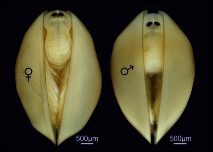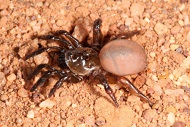IS18073First molecular phylogeny of Laevicaudata (Crustacea: Branchiopoda) with description of a new species of Lynceus from Chile and an updated key to species in the Americas
 , D. Christopher Rogers, Patricio De los Ríos, Ferran Palero and Jørgen Olesen
, D. Christopher Rogers, Patricio De los Ríos, Ferran Palero and Jørgen Olesen

The first molecular phylogeny of smooth clam shrimps (Crustacea: Branchiopoda: Laevicaudata) is presented here, with description of a new Chilean species of Lynceus and an updated key to species in the Americas. The new Chilean species clusters with an Australian clade of Lynceus. Our study highlights the necessity of a worldwide revision of Laevicaudata using multiple genetic markers and detailed morphological studies.








